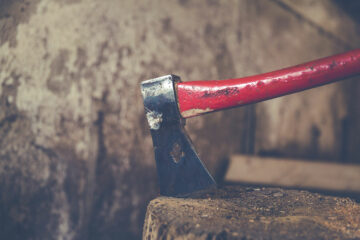Overview: Virgil Ortiz, an artist internationally renowned for his work in pottery, fashion and film, carries on a legacy of pueblo potters. He bridges the past with the future, conceptually and technologically, through his blend of indigenous and sci-fi-influenced work.
His art is featured in museums and galleries across the U.S., including the Smithsonian’s National Museum of the American Indian, and in Europe. It’s been his focus since the clay spoke to him through his ancestors at 15 years of age. He uses that power and history to speak out on taboo subjects like politics and culture, mental health and social justice, including for two-spirit people, contemporary (e.g. Boy George, Grace Jones) and historic (We’wha, the Zuni princess). Virgil also is a leading voice on the Pueblo Revolt of 1680 (and 2180). These things and more in this episode of the Humanitou Podcast.
Also on Apple, Spotify, Pandora, Stitcher, YouTube, Google and other players.
EP 99 SHOW NOTES, LINKS & INTRO TRANSCRIPT*
Connect with Virgil Ortiz:
Website: virgilortiz.com/
Social Media: @virgilortiz
References
alterNative pot, by Virgil Ortiz
Laurencita Herrera on Wikipedia
Southwestern Association for Indian Arts (SWAIA): swaia.org
Pueblo Revolt of 1680: wikipedia.org/wiki/Pueblo_Revolt
Cochiti Pueblo, NM: wikipedia.org/wiki/Cochiti,_New_Mexico
Reitz Ranch Center for Ceramic Arts: reitzranch.org
Fine Arts Center at Colorado College
Connect with Adam Williams / Humanitou:
Humanitou on Instagram: @humanitou
Subscribe: Humanitou Newsletter
Photography
Episode Cover Photo: Ungie Davila
Title Photo: by Virgil Ortiz
Intro/Outro Music
“Tupac Lives” by John Bartmann | freemusicarchive.org
*Full transcript coming soon.
INTRO TRANSCRIPT
Welcome to Humanitou. I’m Adam Williams, creator and host of this podcast series about humanness and creativity.
Today, I’m talking with Virgil Ortiz, an artist internationally renowned for his work in pottery, fashion and film.
Virgil carries and propels a legacy of potters from Cochiti Pueblo, New Mexico, near Santa Fe, including that of his mother, Seferina Ortiz and grandmother, Laurencita Herrera. His work is featured in museums and galleries across the U.S., including the Smithsonian’s National Museum of the American Indian, and in Europe.
Virgil’s figurative, storytelling work in clay often is described as innovative. We’ll talk about why that is — and isn’t entirely — true. We talk about how the clay spoke to his parents and spoke to him, showing Virgil his life purpose at only 15 years old, his actual reason to live that he still trusts and follows these decades later.
We get into how his pottery is used for maintaining a long ancestral history of social commentary through art, and why it’s important to him to use his voice, and to speak out on taboo subjects, like politics, mental health and social justice, including LGBTQ rights.
He shares what contemporary two-spirit people, like RuPaul, Grace Jones, Boy George and the late Pete Burns, have to do with him, his work and his indigenous heritage.
Virgil bridges the past and the future in his work, conceptually and technologically. In the process, he keeps the history of his ancestors from being disappeared, from being erased. He educates the public, and he inspires younger generations, opening doors and mentoring them for their own work.
Here’s my conversation with the accomplished and the humble Virgil Ortiz.
…
Listen on Apple, Spotify, Pandora, Stitcher, YouTube, Google or another podcast player.


